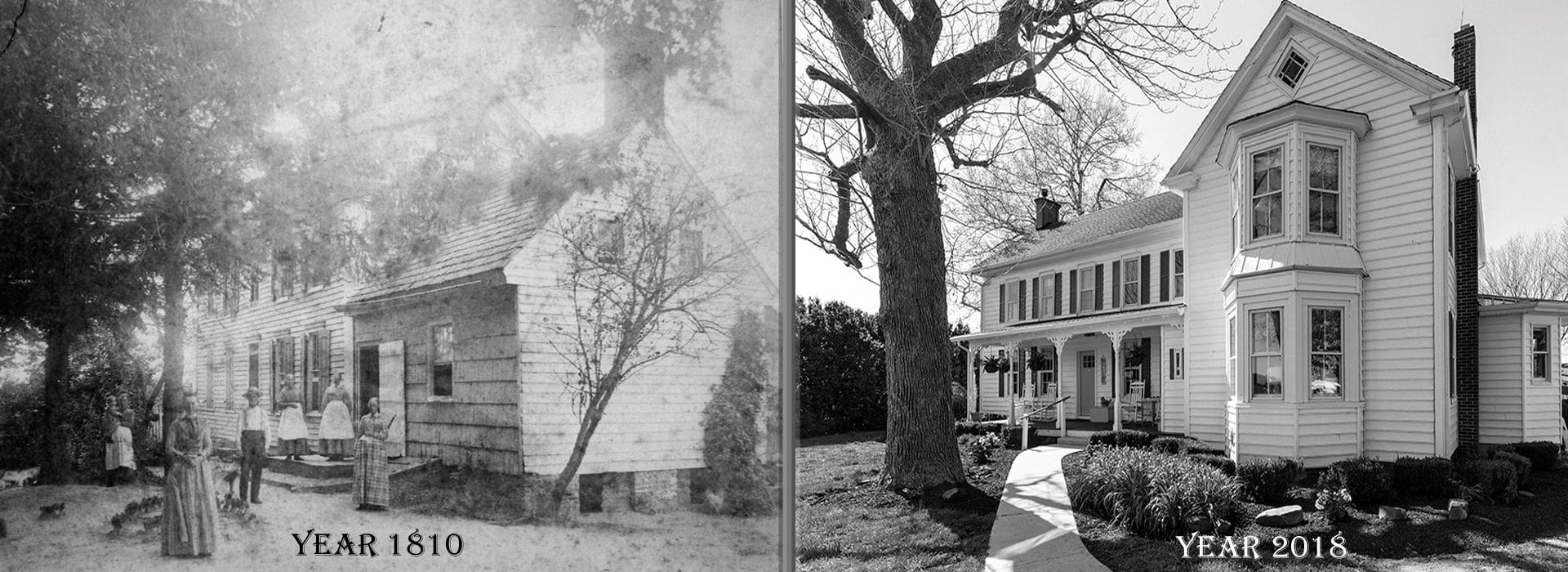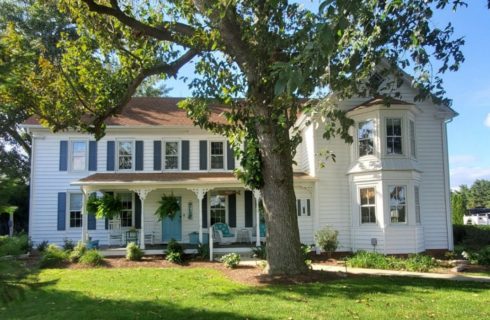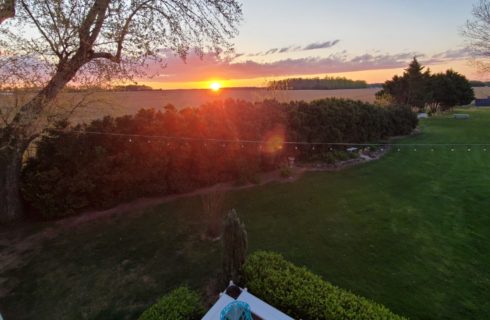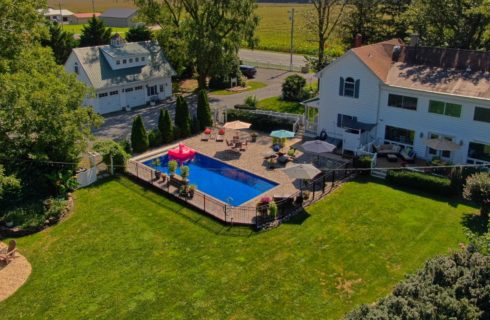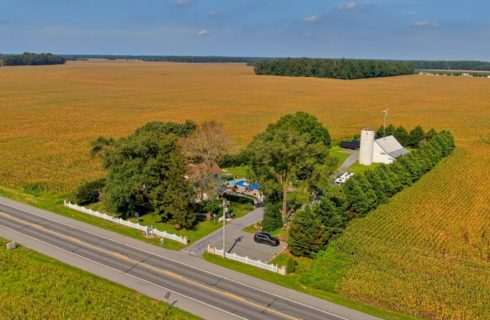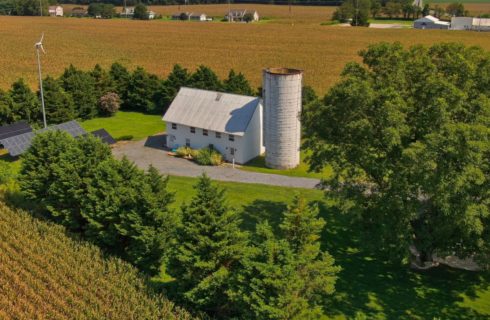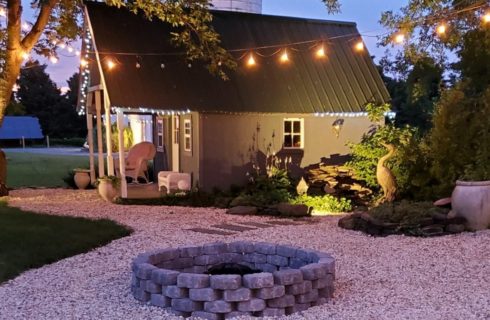About the Innkeeper
 Will previously owned and operated the 5-star rated 1825 Inn Bed and Breakfast near Hershey, PA. After 13 wonderful and successful years, I decided it was time for another chapter in my life. I have always loved the beach, so I started looking in the Delaware area. On one of my vacations, I looked at several properties that were for sale, I kept being drawn back to the David Robbins Homestead in historic Milton, DE. It sits in a country setting, yet it’s still close to area attractions: Broadkill Beach, Lewes Beach, great restaurants, antique store, bakery, restaurants, and The Milton Theater.
Will previously owned and operated the 5-star rated 1825 Inn Bed and Breakfast near Hershey, PA. After 13 wonderful and successful years, I decided it was time for another chapter in my life. I have always loved the beach, so I started looking in the Delaware area. On one of my vacations, I looked at several properties that were for sale, I kept being drawn back to the David Robbins Homestead in historic Milton, DE. It sits in a country setting, yet it’s still close to area attractions: Broadkill Beach, Lewes Beach, great restaurants, antique store, bakery, restaurants, and The Milton Theater.
It has been so rewarding and exciting to renovate the David Robbins Homestead historical home (Circa 1810) into the Mansion Farm Inn. After six months of renovating and decorating the inn from the floor up, specifically with the guests’ enjoyment in mind, it presented a wonderful and fun opportunity. The inn still has its original charm, it’s just repurposed for modern use.
David was a big part of Mansion Farm Inn, unfortunately, David passed away on 4/29/2022. May he rest in peace.
History of the Inn
Once again, a historic building in the Milton area has changed hands and is finding a new business purpose: the Mansion Farm Inn, a 19th century farmhouse with a long history. Much of that history is closely tied to the Robbins family, one of the oldest families who settled in lower Delaware. The house was acquired in September of 2017 by Will McQueen and David Stiber, who, after extensive remodeling, began operating it as a bed and breakfast.
Based on available genealogical data, the first Robbins in North America was a Scotsman, Daniel Robinson (aka Daniel Robbins, 1627-1714), one of a group of Scottish prisoners of war from the battles of Worcester and Dunbar in 1650 and 1651, respectively. These battles were part of the Third English Civil War, in which Oliver Cromwell’s troops defeated a Scottish army loyal to Charles II, the Catholic pretender to the English throne. The POWs from these battles were transported to North America on the ship John and Sara to the Massachusetts Bay Colony. Robbins was about 25 when he arrived here. In due course, he married Hope Potter and immigrated to Monmouth County, New Jersey. From there, his descendants arrived in Delaware during the 18th century.
The first Robbins descendant associated with the Mansion Farm is Daniel’s great-great-grandson, David Robbins Sr. (1774 – 1827), who built a modest 5-room house on his property in 1810. David Robbins Sr. was a Methodist, a lay minister who preached at White’s Chapel for over 30 years, and a highly respected acting judge for the Milton community. His wife, Anne Coard, was a Quaker. Traveling Quaker ministers often stayed at the Mansion Farm on the way to wherever they were headed.
Upon his passing, his son David Robbins Jr. inherited the farm, house, and farm implements. Having received a quality education, the younger Robbins enjoyed considerable material success during his lifetime, with a good part of that obtained from his marriage to Lydia Martin in 1842. Lydia’s family owned large tracts, and David bought 400 acres from his father-in-law to enlarge the holding. He also enlarged the house with a two-story addition. The farm produced corn and wheat for the marketplace, and fruit, truck vegetables, and domestic animals for the family’s use. According to the Delaware historical marker on the property, the first home built in 1810 by the David S. Robbins Sr. was replaced in 1860 by the two-story house visible in the 1889 photograph below, built by his son David S. Robbins Jr.
It would be helpful at this point to look at photographs of the house and the Robbins family from two different time periods, as well as in its present state.
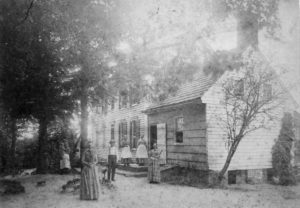
The Robbins farm, ca. 1889
Lydia Martin Robbins is in the foreground, David Robbins Sr. is to her left and behind her. The two women nearest the summer kitchen at right are said to be Lydia’s surviving sisters Mary, Emily, and Eliza. If that assumption is true, the photograph was taken in 1887 or earlier, prior to Eliza’s death in that year. The woman at left holding a baby could be daughter-in-law Orpha Pierce Robbins, or daughter Mary Robbins Nailor, both of whom gave birth to children from 1886-1889.
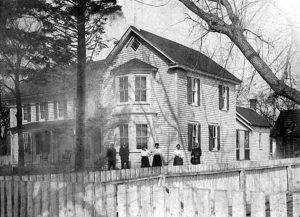
The Mansion Farm, ca. 1909
The people have not been identified, but we can presume that John M. Robbins and Orpha Pierce Robbins are present, probably at right.

The Mansion Farm Inn, April 2018
Much of the front of the home remains as it was in 1909, but there has been extensive remodeling over the last century in the interior, side, and rear of the building.
The earliest photograph is noted as having been taken ca. 1889, with the camera pointed at the front (street) side of the house at an angle from the east. The view is of the original house with a single-story summer kitchen on the side closest to the camera, and a rudimentary, almost ground-level uncovered porch. The state historic marker, which today faces the front of the house states that a major two-story addition was made to the house ca. 1889. That addition, with its two bay windows in the front, is clearly evident in the 1909 photo and is intact today. The 1909 photo also shows a completed, covered front porch. We can probably assume that the addition to the house was made shortly after the oldest photo was taken, and with its completion the property became known as the Mansion Farm.
David Robbins Sr. died in 1900 and wife Lydia in 1905. The Mansion Farm passed to their son John M. Robbins and his wife Orpha Pierce. John continued to farm wheat and corn, but also served two terms in the Delaware House of Representatives from the 10th District.
The heirs would lose the farm within 18 years of inheriting it.
A contract (indenture) between the Delaware Trust Bank and Mr. and Mrs. John Robbins made on May 7, 1923 shows the transfer of the Mansion Farm to the bank for the sum of $10,000. What is not apparent in any document I’ve been able to find is why this sale took place. The anecdotes I’ve run across suggest that in 1920, John M. Robbins made a loan to the Royal Packing Co., an important cannery at the foot of Front Street in Milton. To make the loan, he borrowed from the Delaware Trust Co. and used the Mansion Farm as collateral. The cannery failed, and he defaulted on his loan repayment, which was due at the end of the canning season.
Although all of the details are not available, the process by which John Robbins became insolvent was of longer duration and more complex. There is a common thread through all of this process, however: N. Wallace White, Milton’s serial entrepreneur and apparently a very persuasive individual.
The Royal Packing Co. cannery, ca. 1907, photographed by Dr. William H. Douglas. These structures were destroyed by the fire of 1909 and quickly rebuilt (courtesy of Milton Historical Society).
Sometime around 1910, Nathaniel Wallace (“N. W.”) White sold his interest in the Douglass and White Shirt and Overall Factory to his partner, and bought a share in the Royal Packing Co. He quickly saw a new opportunity to lower the operating costs of the cannery and sell a new kind of commodity to the town of Milton: electric power. The town was having problems with the Georgetown utility supplying electricity for the town’s street lights. On 1/25/1911, the Wilmington Morning News reported that the utility had to curtail supplying electricity to Milton’s movie house in order to keep the street lights on. White convinced his son-in-law Oscar Betts, R. Frank Walls, and John Robbins to join in a venture with him; they raised $20,000 in capital to start the Milton Light, Power and Water Company, which would produce electricity for the milling operation next door to the cannery and sell the surplus power to Milton customers. The hydroelectric power facility was set up at Ingram’s Mill, about 3 miles from Milton.
On September 9, 1912, the Wilmington Morning News reported that due to insufficient water flow on the Broadkill, the Ingram facility could not produce sufficient voltage to supply the current required to light Milton’s streets – even after addition of another water turbine – and operations were suspended. It was clear to many that the suspension was permanent. The plant continued to supply electricity for Edge Water Mills, the Royal Packing Co.’s subsidiary, but by 1917 the utility was several years in arrears with the State of Delaware for taxes. It quietly folded shortly after that news report.
Somehow, even with the failure of the power generation venture, White convinced his son-in-law Oscar Betts and John M. Robbins to buy out the remaining shares of the Royal Packing Co. and Edge Water Mills, in 1917. One could reasonably think that the investment decision was motivated by the U. S. entry into WWI, and the anticipation of a huge demand for canned goods. This would prove to be a fateful decision for John M. Robbins.
In 1918, while the U. S. was sending troops in large numbers to fight in France, an acute shortage of tin cans developed. Newspapers of the day reported that the problem was logistical: there weren’t enough railroad freight cars during wartime prioritization that were available to transport tin plate from Pittsburgh to the seven can factories in Maryland—the only suppliers of cans to Delaware canneries. Production faltered for a time in the Delaware canneries. Then, in 1919, the supply of tomatoes available to canneries in the region was cut drastically when growers would not enter into futures contracts until their unrealistically high price demands were met. Production of canned tomatoes fell more than 80% in the region that year. Finally, the U. S. was hit with a protracted wave of strikes by industrial and railroad workers from 1919 to 1921 that also impacted the canneries’ supply chain. It was an extraordinary run of bad luck that doomed the cannery and the mill, however good the investment appeared initially.
We could theorize that Robbins was simply throwing good money after bad, trying to keep the business afloat, but by 1921 the Royal Packing Co. closed its doors and was acquired by Delaware Trust Co., probably as a seizure for default on a loan or loans. The bank turned around and sold the factories to Hazzard and Wilson, who re-opened them after a few months’ time.
But it was not over for John M. Robbins. In modern terms, he was probably over-leveraged, land-rich but not flush with enough cash to make sizable investments. Land parcels were often used as currency to transact business, but this mode of dealing was not going to work as a means of making an investment. Robbins and his partners required cash, which the banks would provide only when supported by collateral. We can surmise that he put up the Mansion Farm to obtain the cash he needed for investment in the cannery and to keep it operating as it lost money after 1918. In the end the size of the debt was too much to pay off with farm income, and he lost it all.
The Delaware Trust Co. took title to Mansion Farm on May 7, 1923. The bank in turn sold the title to the Sussex Investment Company, and that firm held an auction on June 21, 1924, at which Robert D. Lingo and Charles G. Jones submitted the winning bid. The change in ownership would result in a new economic activity at the property, which will be subject of the next post.
Sources:
Wilmington Morning News: February 24, 1917; March 29, 1921; July 13, 1921; June 25, 1924;
The Canner, October 4, 1919
The History of Mansion Farm (author unknown)
Milton Historical Society collections
